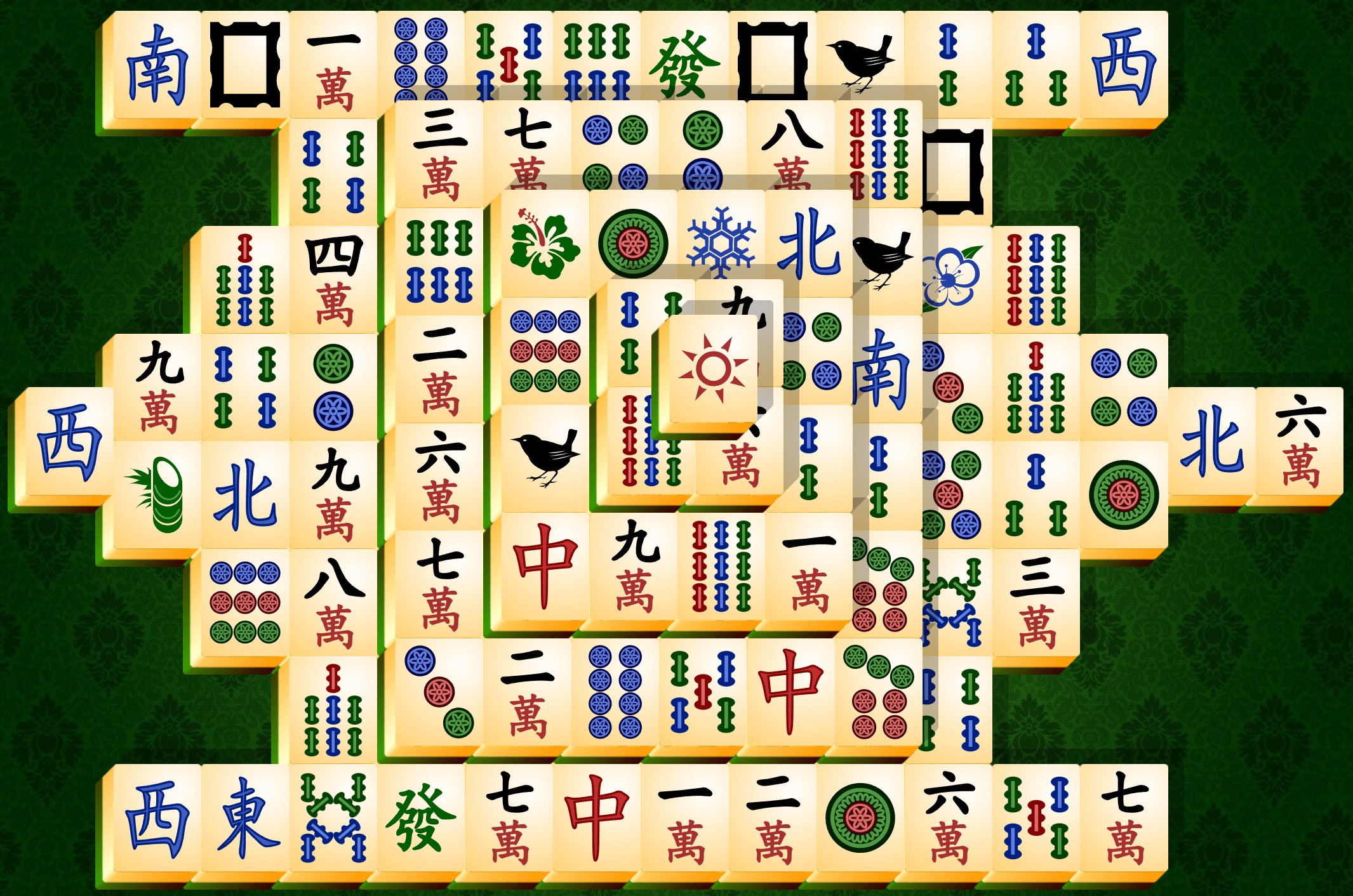
In this tutorial, we will attempt to solve a Mahjong game step by step. Unfortunately, the entire game would be too long, so we will only consider the first 10 steps. This should introduce a beginner player to the moves and to basic strategy.
Tutorial: How to play Mahjong?
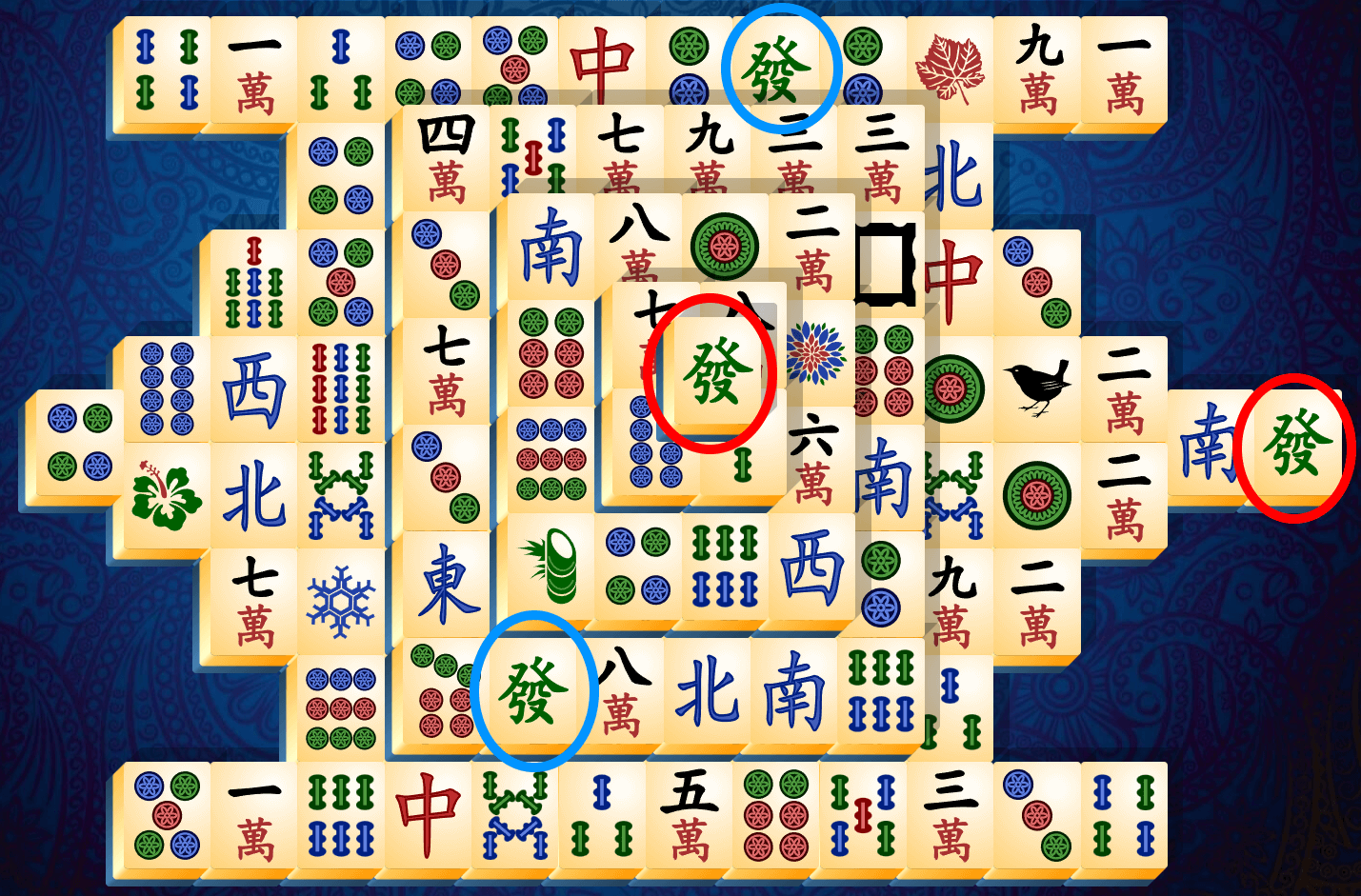
This is what a stack of Mahjong tiles looks like initially. This pyramid-like layout is called the “Turtle” because of the visible legs and tail and the pyramid’s similarity to the turtle’s shell. There are many Mahjong layouts, but the Turtle is the most popular and can be found as a default layout in most Mahjong Solitaire games.
A good starting strategy is to remove the tiles on top of the pyramid and at the end of the Turtle’s legs, tail, or head. This is because eliminating these tiles makes a lot of other tiles available. Here, we are lucky because we see a Green Dragon tile on top of the Turtle’s shell and at the end of its tail. These two tiles are marked with red. There are also two other Green Dragon tiles marked with blue. These, however, cannot be removed because they are blocked from left and right by other tiles. Therefore, in our first move, we will remove the two Green Dragon tiles marked with red circles.
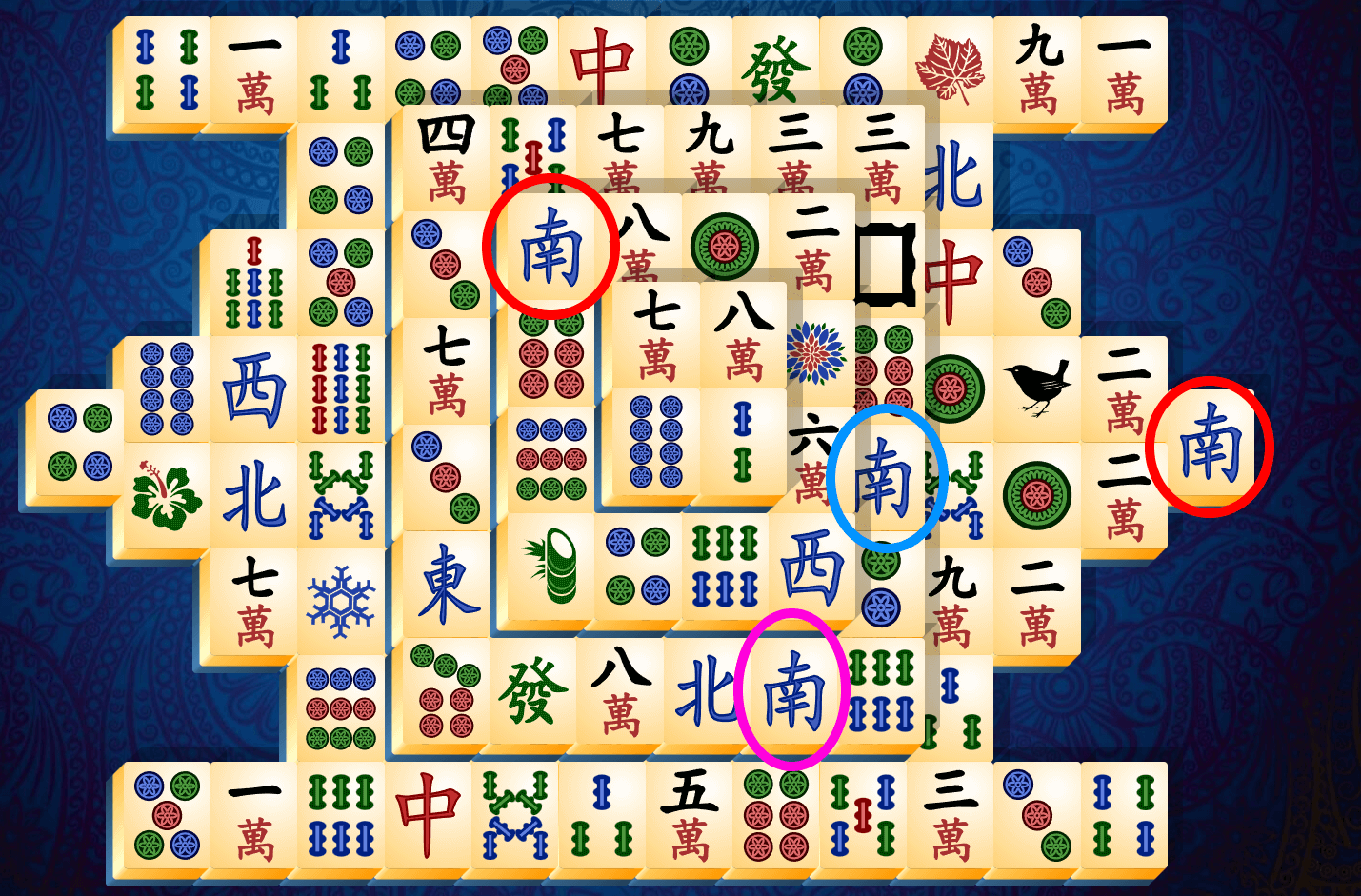
Taking away of the Green Dragon tile at the end of the Turtle’s tail makes a South Wind tile (marked with a red circle) available for removal. We will match it with another South Wind tile marked with a red circle. Why not the one circled in blue? That is because removing the tile in a blue circle will not make any other tiles available for removal. However, removing the tile circled in red will make the 8 of Characters tile available. The fourth South Wind tile is also visible on the board, marked with a purple circle. This tile is currently unavailable for removal because it is stuck between the North Wind and the 6 of Bamboos tile.
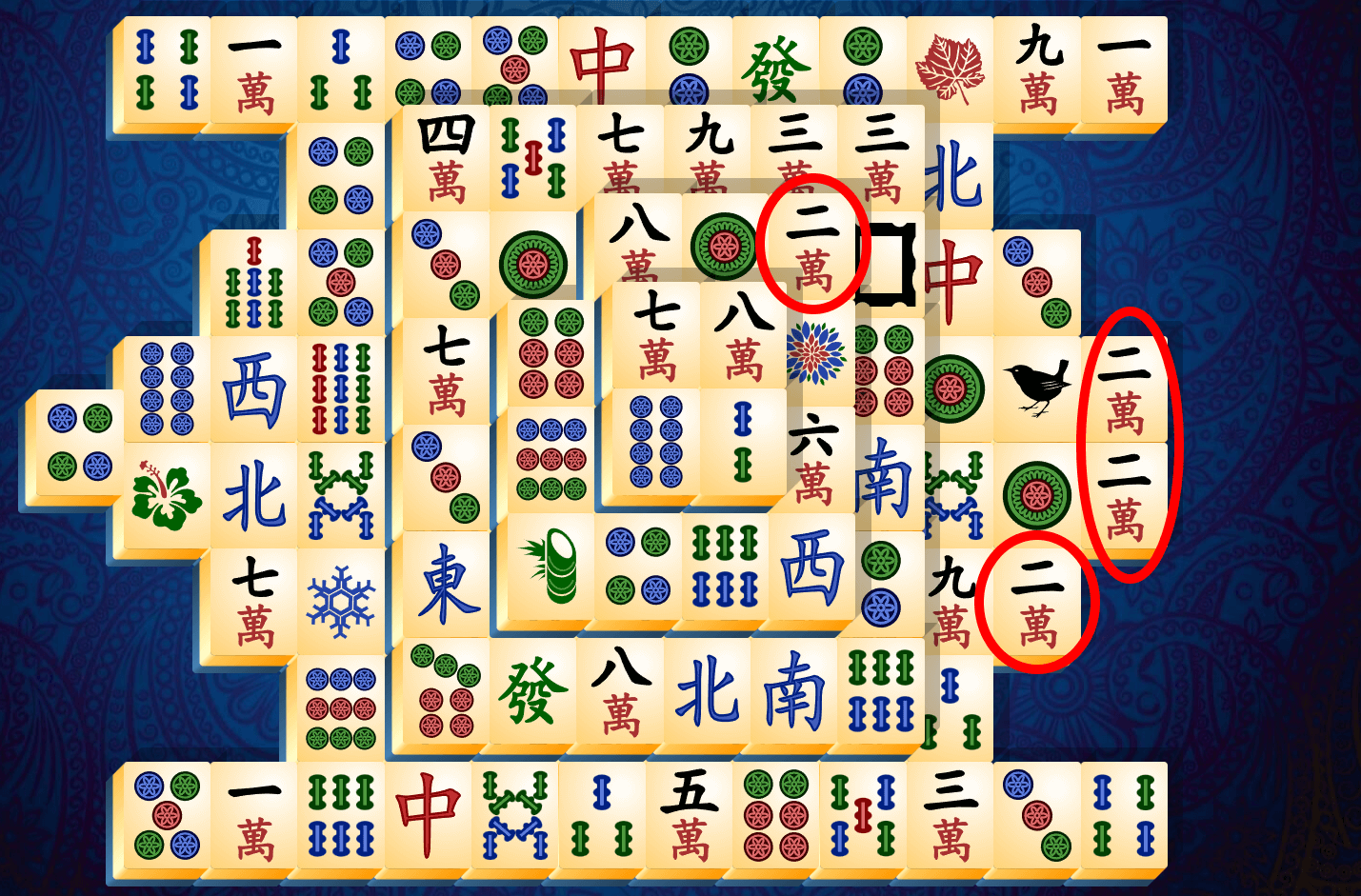
Now there are four matching tiles available: four 2 of Characters tiles can be removed at once. Whenever you see a situation where four matching tiles can be removed, you can remove them without hesitation. If you only have two or three matching tiles available, you should always think carefully about which tiles to remove first, because removing tiles in the wrong order can get you stuck. However, if you have four tiles available, the order does not matter because they all go at once.
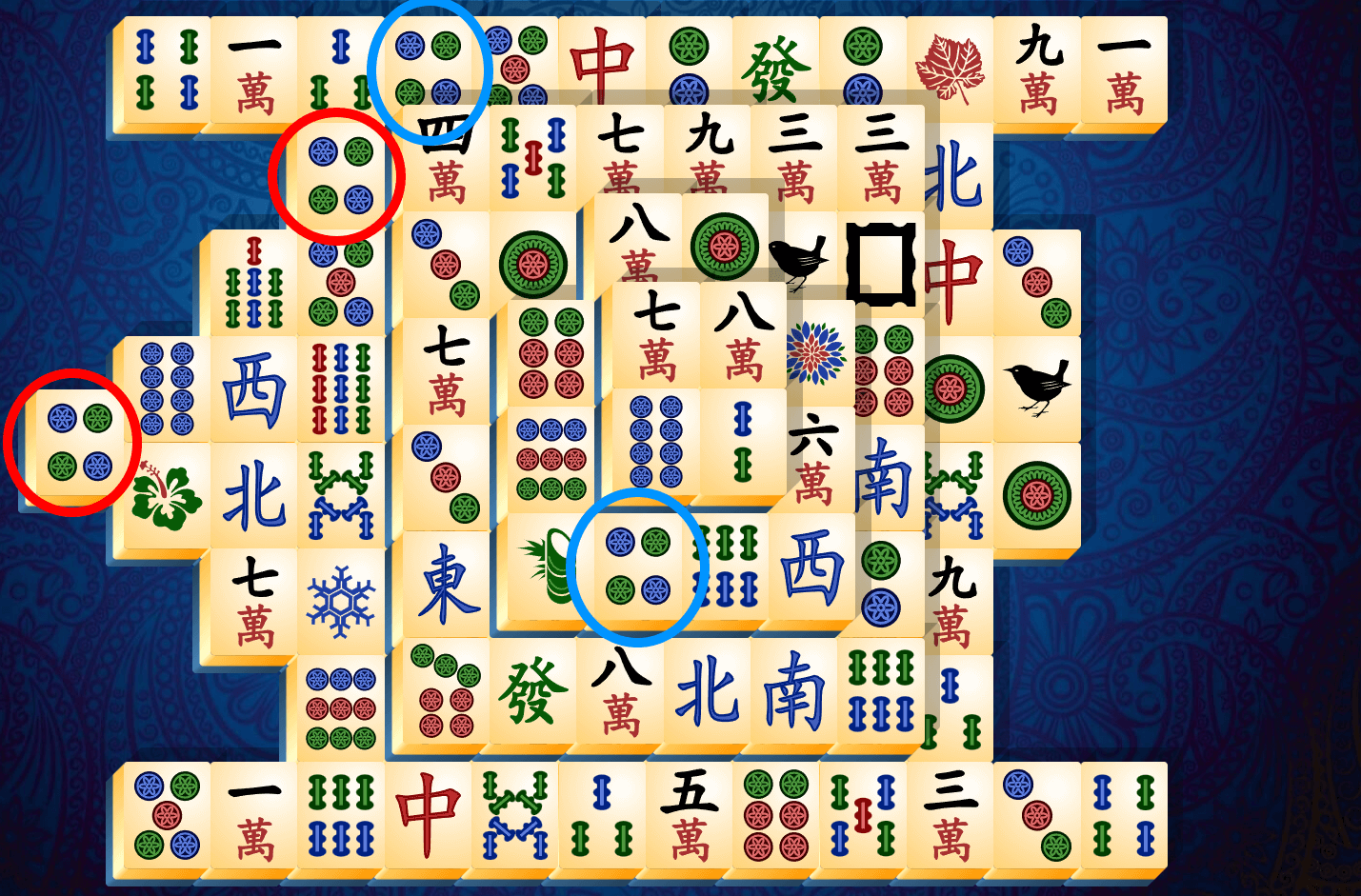
Here we can see four 4 of Circles tiles. Two of them, marked with blue circles, are unavailable, because they are blocked from both sides. However, the two circled in red are available because nothing blocks them from the left. We remember that it is good to start by removing the Turtle’s head. Therefore, we remove the two 4 of Circles tiles marked with red circles.
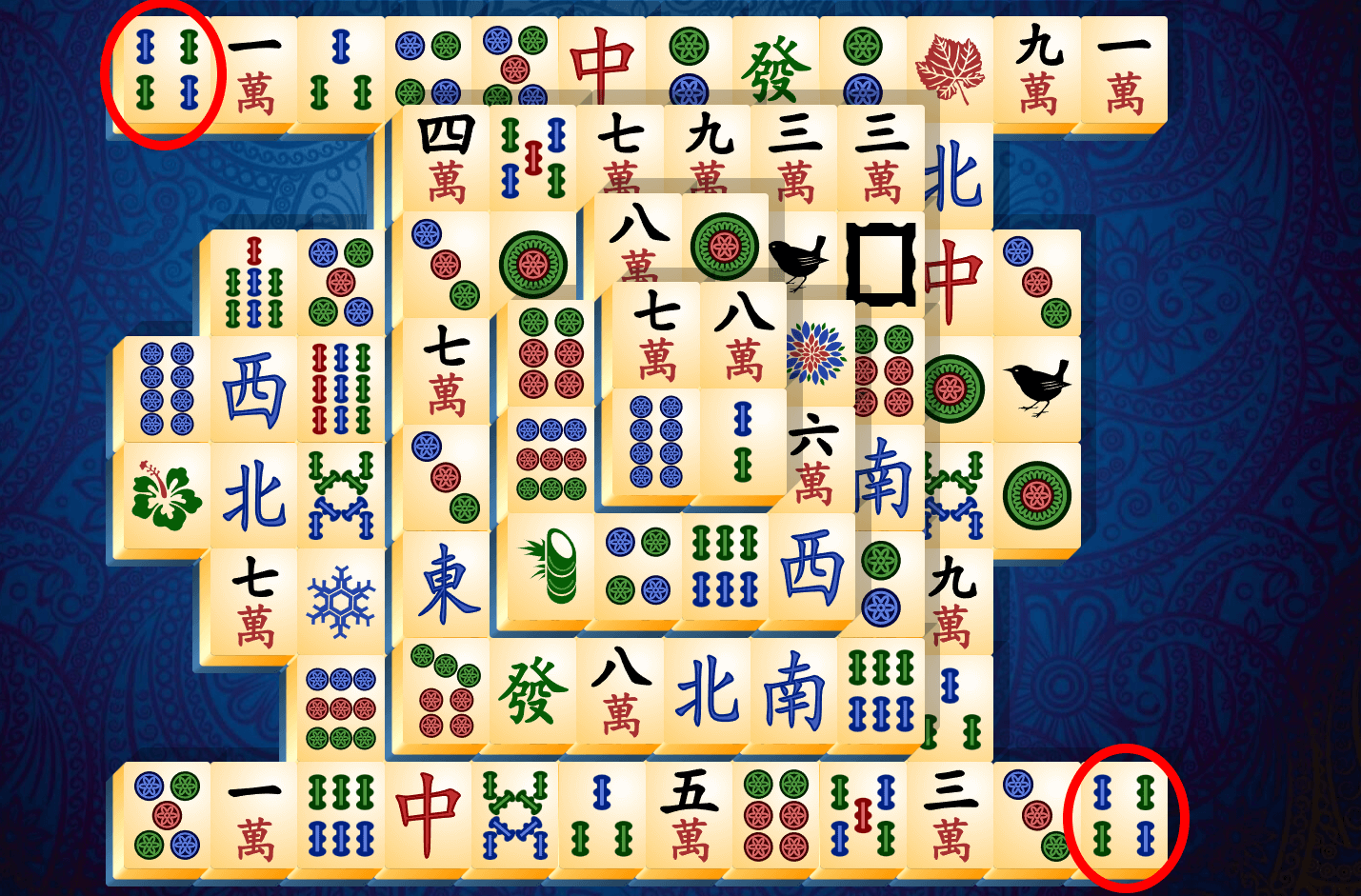
Our next move is to remove the two 4 of Bamboos tiles from the Turtle’s legs. Removing tiles from the most extended rows is always a good strategy. This is because the longer a row is, the higher the chances that some tiles will be blocked inside it.
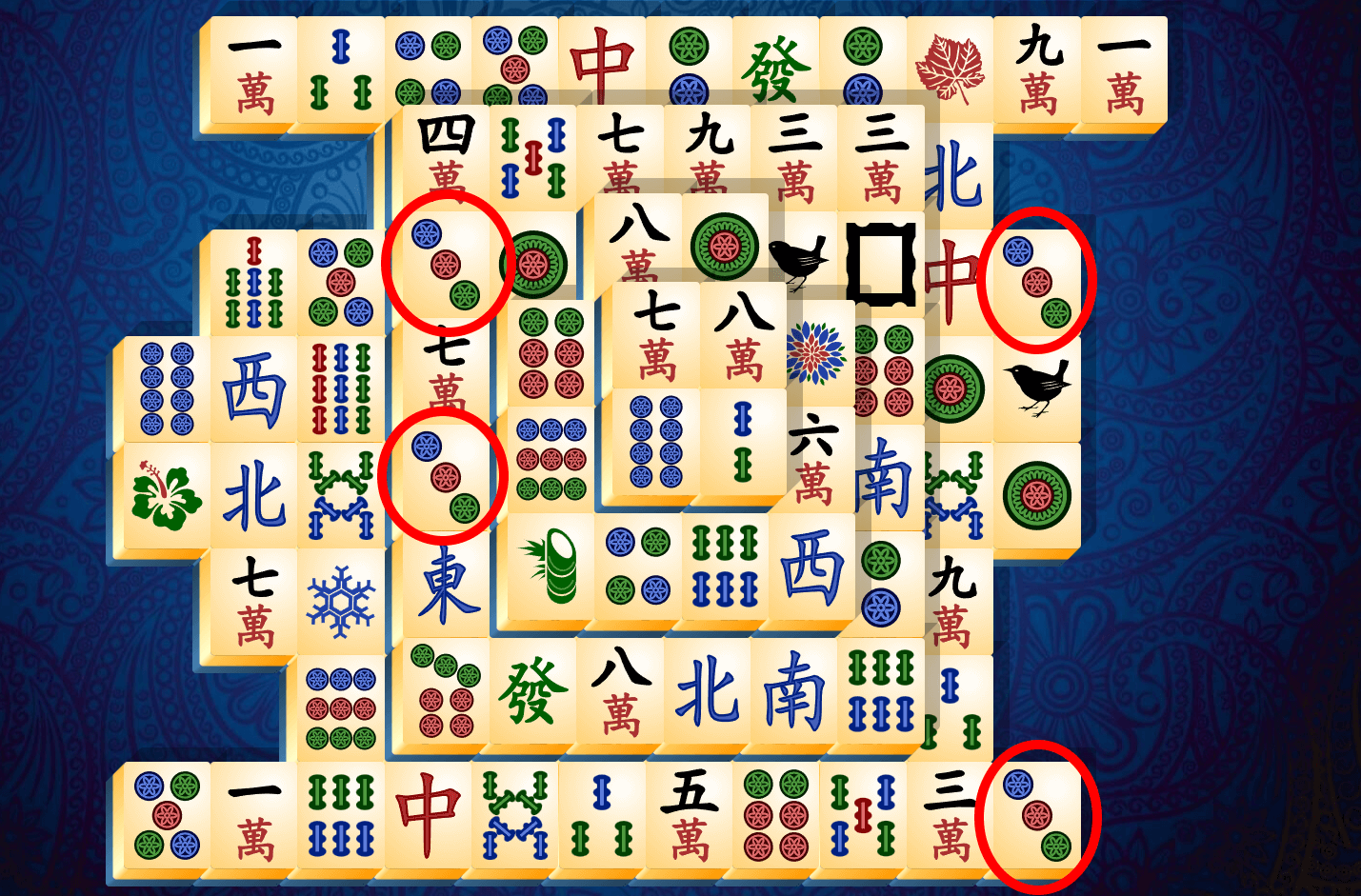
Again, we have four matching tiles available for removal. This time, these are four 3 of Circles tiles marked on the picture with red circles. As mentioned before, when all four tiles are available for removal, it is safe to do that because you cannot get the order of removal wrong. This is why we remove all four 3 of Circles right away.
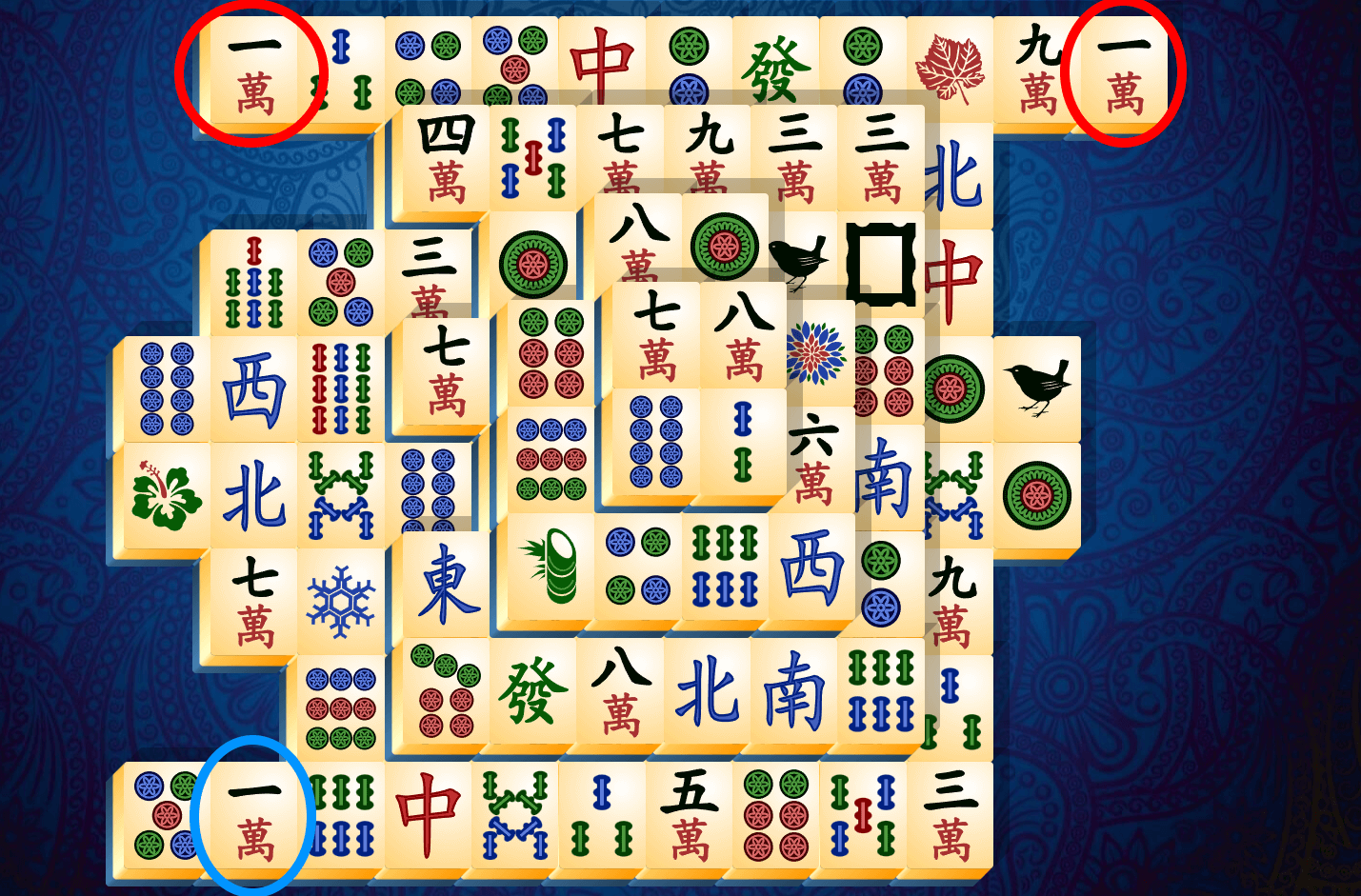
We can see three 1 of Characters tiles on the board. One of them—the one in the blue circle—is unavailable, locked in the bottom row. Two other 1 of Characters tiles are in the top row, and the fourth one is unaccounted for, probably somewhere underneath the Turtle’s shell. In such a situation, removing the two available 1 of Characters tiles may be a good idea because they block a lot of tiles inside one of the most extended rows. Dismantling long rows should be one of the main priorities during the game.
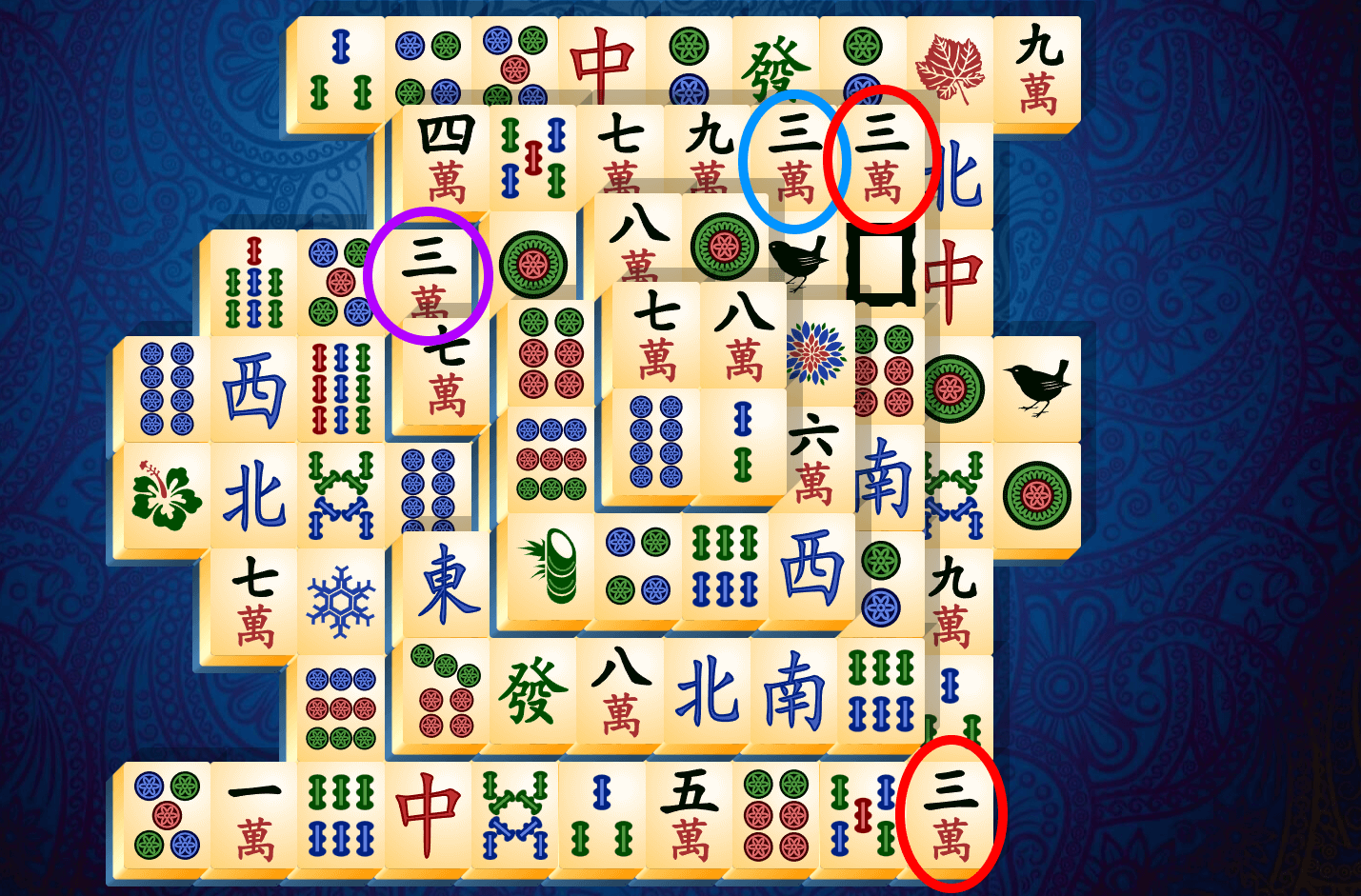
Now we can see four 3 of Characters tiles on the board. Two are unavailable, and the other two, marked with red circles, can be removed. We can see that there are two 3 of Characters tiles next to each other: marked with blue and red. This is a hazardous situation because when two matching tiles are next to each other, the chances of getting stuck are very high. This can happen if we remove the other two tiles, which are not next to each other. Then, to remove the two next to each other, you need to remove all tiles to the left and all tiles to the right of them. And this may be sometimes hard or even impossible.

As a final move of this tutorial, we will decide which of the 7 of Characters tiles we should remove. Notice that one of them, the one in a purple circle, is unavailable. Of the remaining three, one is at the top of the pile, one is in the bottom layer, and one (marked with a blue circle) is somewhat in the middle. We will choose the two tiles marked with red circles. Why? The tile at the top is essential and should be quickly removed because reducing the topmost layer will allow us to access a lot of tiles hidden below. The tile in the bottom layer makes one other tile available: the Winter Season tile. On the other hand, the tile marked with blue will not make any tiles available immediately after its removal. The tile hidden beneath it will be available only after the three tiles to the left of it are removed. Therefore, the immediate payoff seems much higher if we remove the two tiles marked with red.
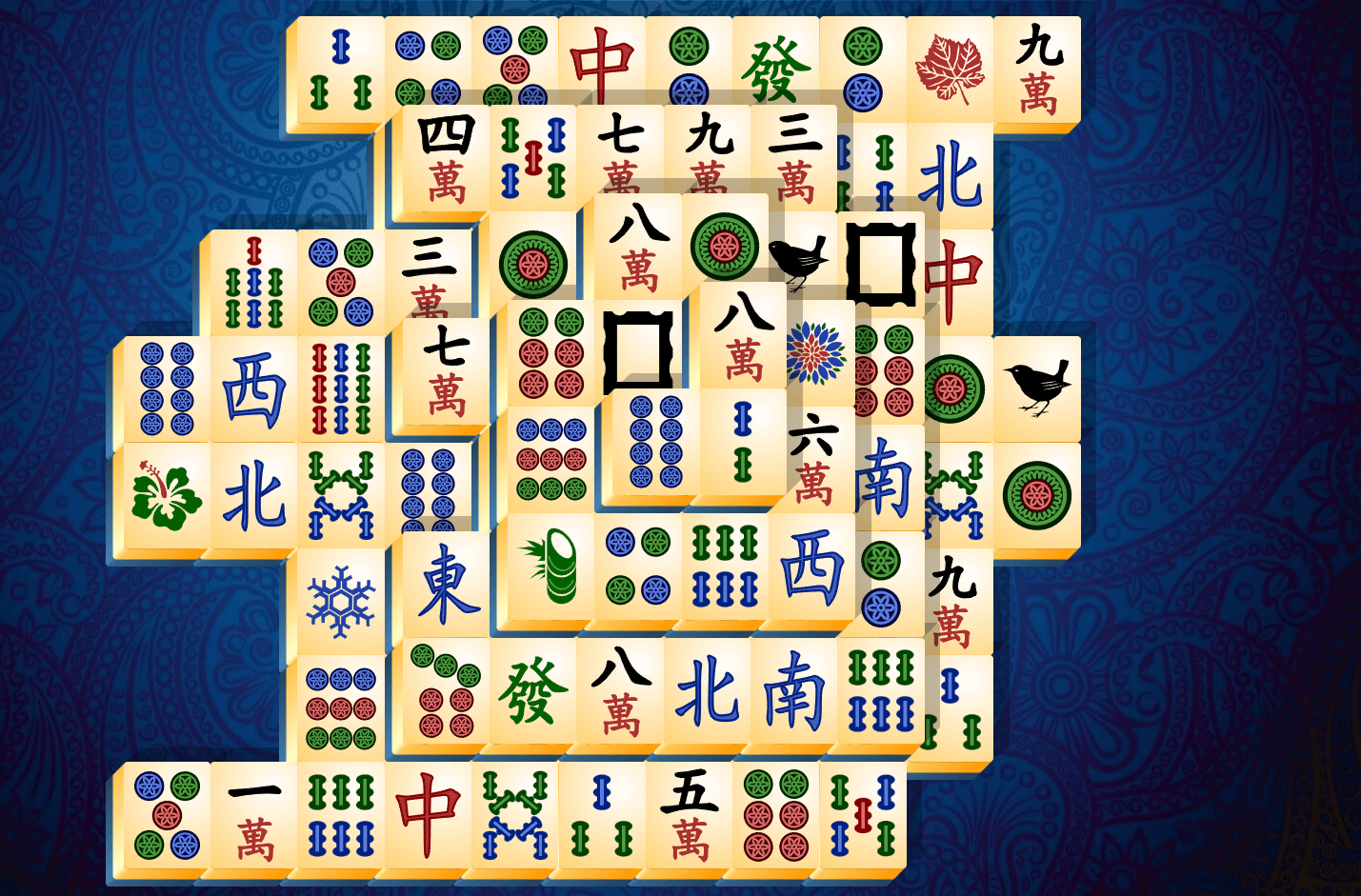
This is the final step of our tutorial. What move should we make next? One possibility is to remove the two 8 of Circles tiles: one is on top of the pile, and the other is far to the left, blocking a very long row of tiles. Another possible move is to remove the Chrysanthemum and Bamboo tiles or the two 8 of Characters tiles because it would help to dismantle the top of the pyramid. There are also other moves. For example, we can remove the 3 of Bamboos tiles, 1 of Circles tiles, the Spring Season and Winter Season tiles, or the 9 of Circles tiles. These, however, are probably not as good as the moves mentioned earlier. Can you spot any other possible moves?
Other resources
You can read more on how to play Mahjong Solitaire on Wikihow.
Alternatively, you can watch a video on YouTube: